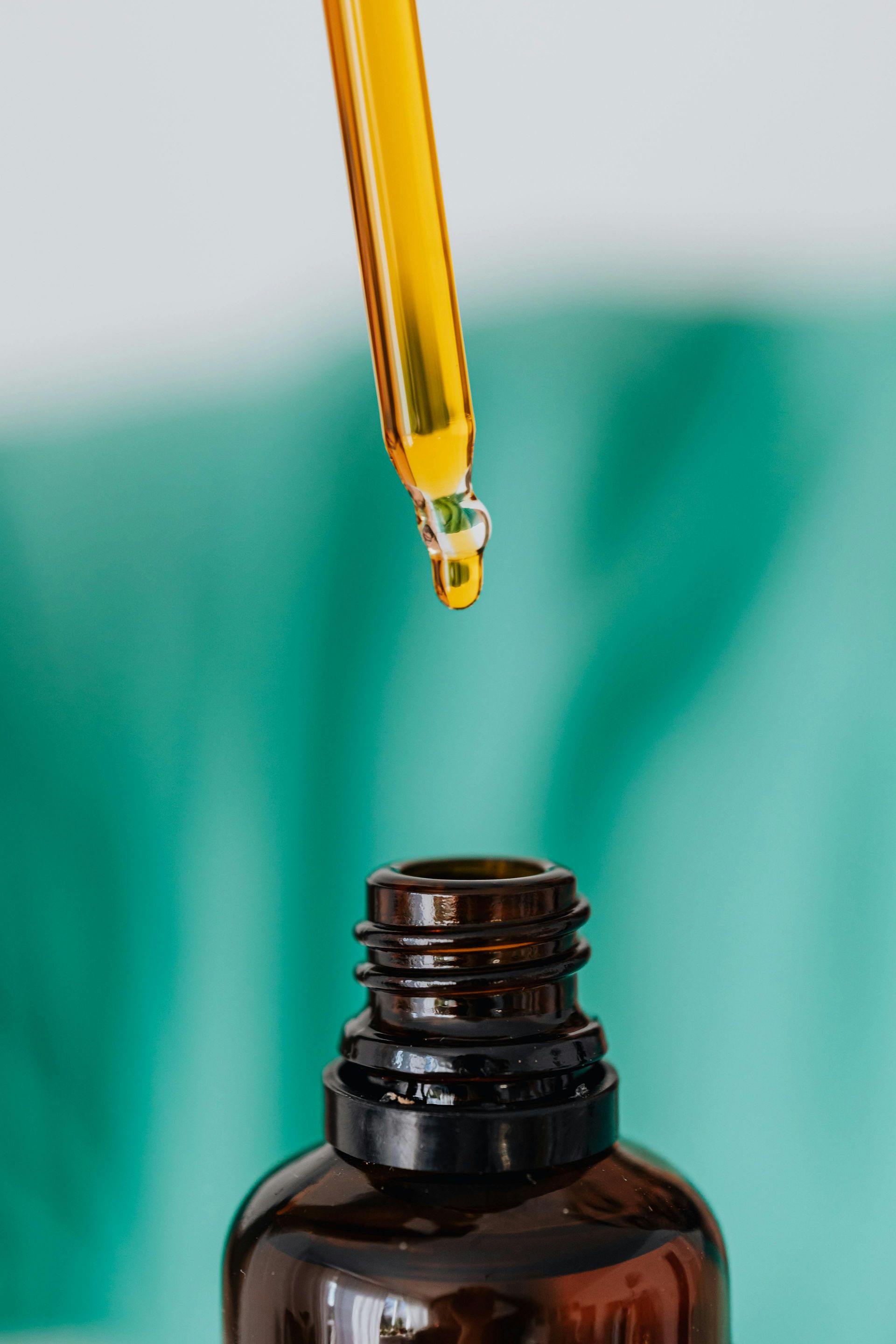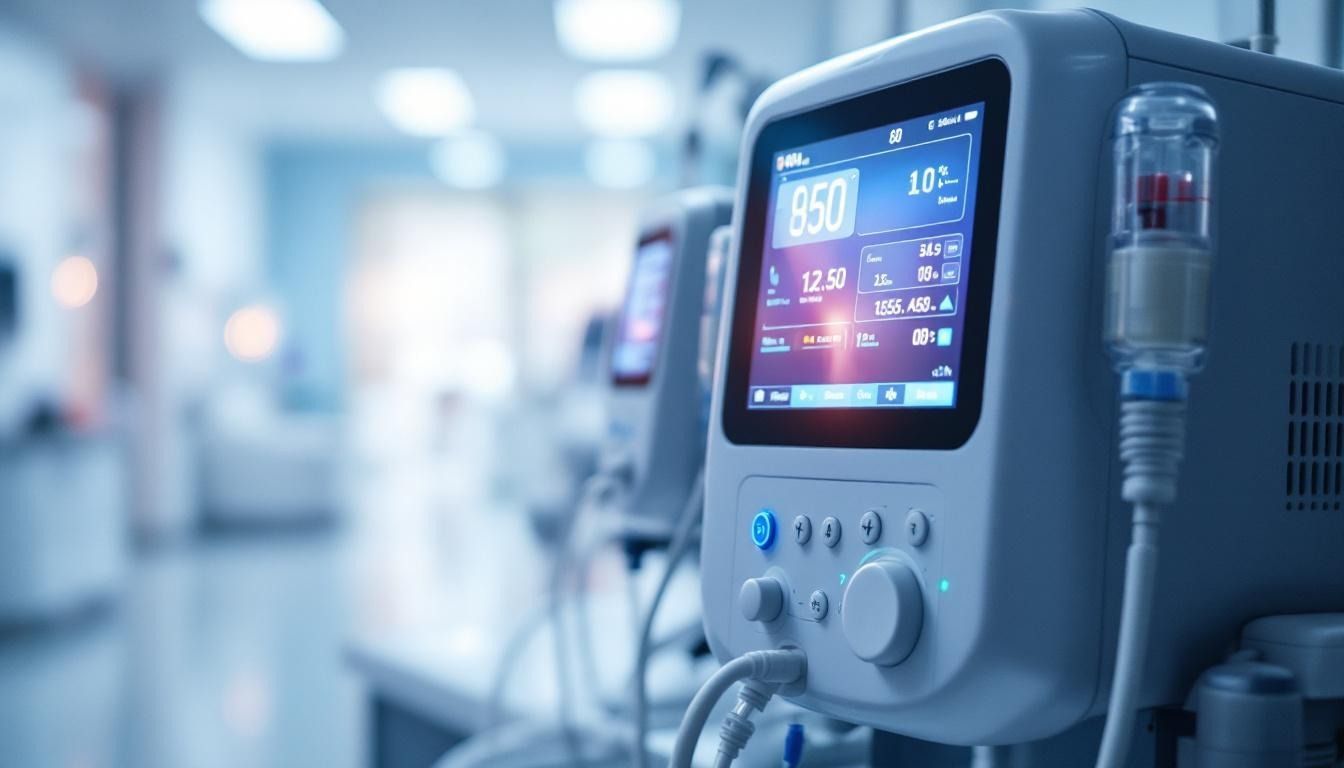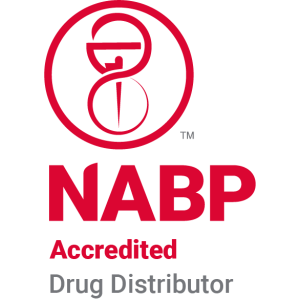The Connection Between TPN and Improved Menstrual Health
Understanding the Role of TPN in Menstrual and Reproductive Health
Total Parenteral Nutrition (TPN), a vital medical intervention for individuals with compromised gastrointestinal function, has emerging links to menstrual health and hormonal balance. While primarily aimed at preventing malnutrition and supporting recovery, recent insights suggest that TPN’s role extends into influencing reproductive outcomes and menstrual regularity through its impact on overall nutritional status. This article explores how TPN interacts with menstrual health, examining scientific principles, potential benefits, risks, and the broader context of nutritional influence on women's reproductive wellbeing.
What is Total Parenteral Nutrition (TPN)?
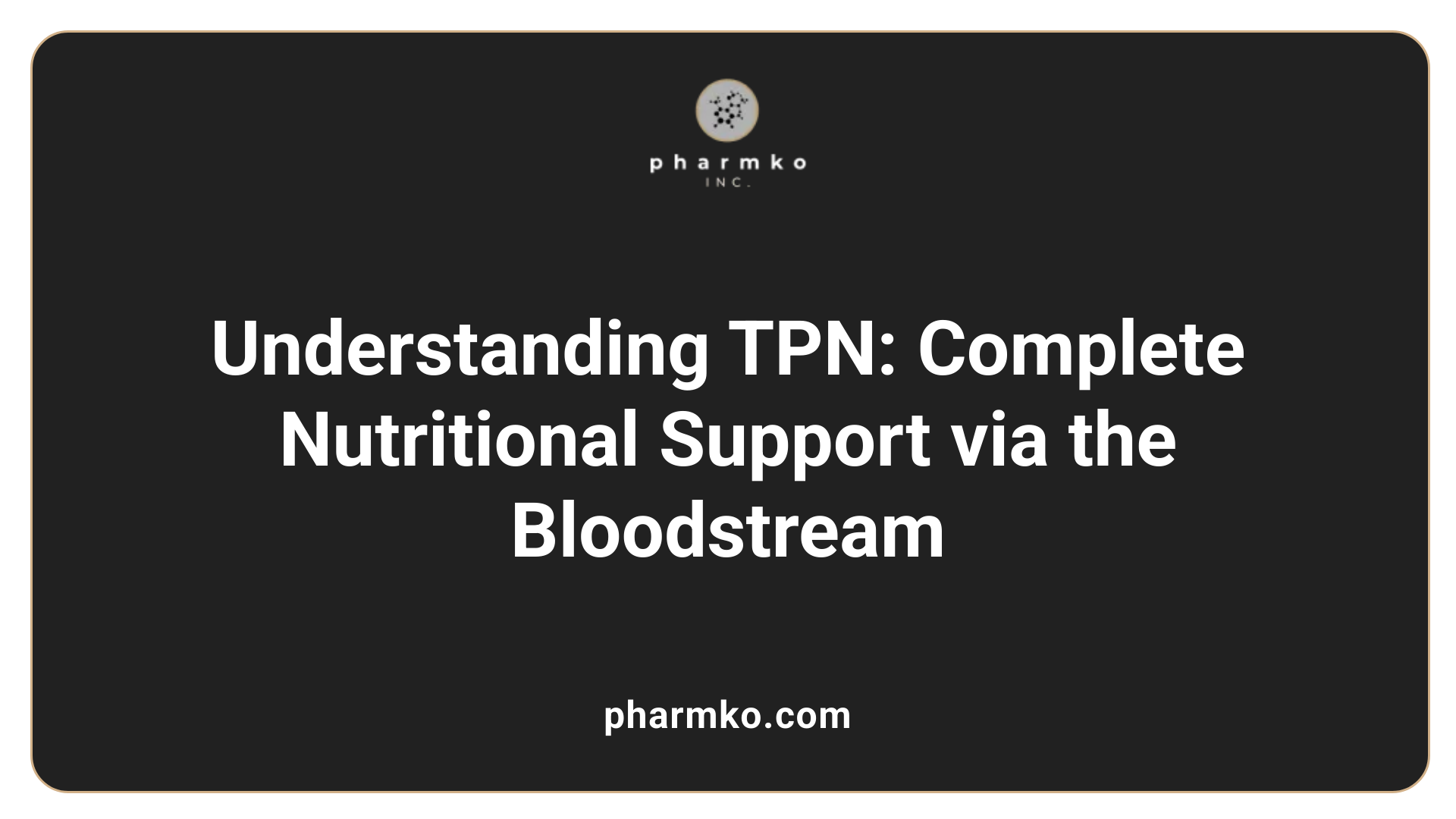
What is Total Parenteral Nutrition (TPN)?
Total Parenteral Nutrition (TPN) is a method of feeding that delivers essential nutrients directly into a person’s bloodstream through a central vein. This approach bypasses the digestive system entirely, providing a complete nutritional supply when oral or enteral feeding isn't possible.
The main goal of TPN is to prevent or correct malnutrition in patients who cannot eat or absorb nutrients normally. This might include individuals suffering from gastrointestinal diseases, obstructions, severe digestive disorders, or conditions such as short bowel syndrome.
Components of TPN solutions
A typical TPN mixture contains a combination of the following nutrients:
| Component | Description | Example Sources or Forms |
|---|---|---|
| Carbohydrates | Provide energy, usually in the form of glucose | Dextrose solutions |
| Lipids (Fats) | Supply essential fatty acids and concentrated calories | Soybean oil emulsions, fish oil emulsions |
| Amino Acids | Building blocks of proteins | Commercial amino acid solutions |
| Vitamins and Minerals | Support metabolic processes and enzyme functions | Multivitamin preparations, electrolyte mixes |
| Electrolytes and Water | Maintain hydration, balance pH, and support cell function | Sodium, potassium, calcium, magnesium, chlorine |
These elements are mixed in precise concentrations tailored to each patient's needs to ensure proper balance and avoid complications.
Purpose and use cases
TPN is particularly useful when the gastrointestinal tract is non-functional due to conditions like severe vomiting, bowel obstructions, Crohn’s disease, or after certain surgeries. It can be used temporarily during acute illnesses or long-term for chronic conditions.
Administered via sterile techniques to reduce infection risks, TPN requires close monitoring of blood glucose, electrolyte levels, liver function, and signs of infection. Proper catheter care is essential to prevent bloodstream infections.
In summary, TPN offers vital nutritional support for patients unable to meet their requirements through eating, helping to improve recovery and maintain health in complex medical situations.
Common complications of TPN and management strategies
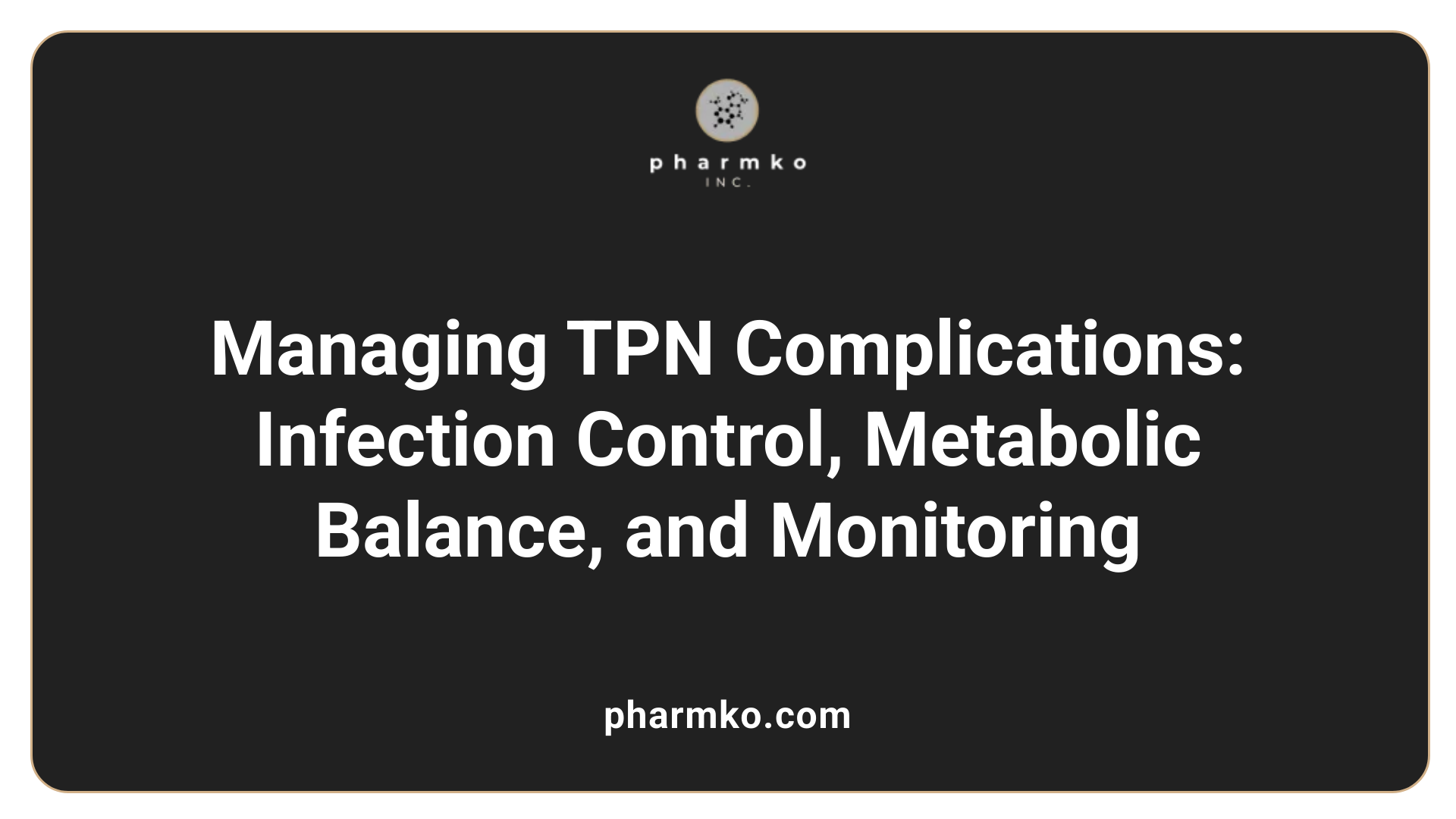
What are the common complications associated with TPN?
Total Parenteral Nutrition (TPN) is a lifesaving therapy for patients with severe digestive and absorption issues. However, it can lead to various complications that require careful management.
Infections and bloodstream complications
One of the most common issues is infection, particularly related to the central venous access device used for TPN delivery. These can include bloodstream infections, also known as sepsis, which can become life-threatening if not promptly identified and treated. Local site infections at the catheter insertion point are also a concern.
Metabolic disturbances
TPN can disturb normal metabolic processes. Patients often experience hyperglycemia or hypoglycemia, depending on glucose management. Electrolyte imbalances such as sodium, potassium, magnesium, or phosphate abnormalities are frequent. Refeeding syndrome, a serious condition involving fluid and electrolyte shifts, can occur if nutrition is reintroduced too rapidly. Cholestasis, characterized by impaired bile flow, can develop with prolonged TPN use.
Hepatic and bone-related issues
Long-term TPN therapy is linked with liver problems, including fatty liver (hepatic steatosis), cholestasis, and fibrosis, which can progress to more severe liver disease. Bone health may also suffer; osteoporosis and osteomalacia are possible due to deficiencies in calcium, vitamin D, or other nutrients, compounded by liver dysfunction and reduced physical activity.
Mechanical complications
Mechanical issues include venous thrombosis and catheter-related thrombosis, which can occlude the vessel and complicate TPN administration. Other risks include pneumothorax or vascular injury during catheter placement. These complications necessitate vigilant monitoring and skillful insertion procedures.
Additional concerns
Nutrient deficiencies may develop if the TPN formulation is not properly balanced. Additionally, toxicity due to excess manganese can cause neurotoxicity. Gallbladder and bile duct complications may arise from long-term TPN, potentially requiring additional interventions.
Management strategies
Effective management involves multidisciplinary care, including regular monitoring of blood chemistry, imaging studies, and site assessments. Adjusting the TPN formulation to meet individual needs, maintaining sterile technique during catheter care, and early detection of complications are essential steps. Preventive measures, such as proper catheter placement and rotation, alongside a tailored nutritional plan, help minimize risks and improve patient outcomes.
TPN's role in supporting healing and recovery in medical patients
Total parenteral nutrition (TPN) plays a vital part in the recovery process for certain medical patients who cannot use their gastrointestinal (GI) tract effectively. By delivering essential nutrients directly into the bloodstream, TPN ensures that patients maintain adequate levels of calories, proteins, vitamins, and minerals necessary for tissue repair, immune function, and overall strength.
Research indicates that TPN can promote wound healing and help patients regain strength, mobility, and quality of life, particularly following surgery or severe GI illness. It supports mechanisms like collagen synthesis and immune response, which are crucial for tissue repair.
However, TPN is often compared with total enteral nutrition (TEN), which involves feeding through the GI tract via a tube. Studies suggest that TEN might have advantages in wound healing as it maintains gut integrity and reduces inflammatory markers such as tumor necrosis factor-alpha (TNF-α). It also diminishes the risk of bacterial translocation and infections associated with central venous lines used in TPN.
Despite its benefits, TPN does carry risks, including organ stress, bloodstream infections, and complications like liver dysfunction. Therefore, clinicians carefully weigh these risks against its benefits. In many cases, TPN is used temporarily, supporting recovery until patients can resume enteral feeding.
In summary, while TPN supports healing and helps patients recover when oral or enteral feeding is impossible, it is generally considered a second-line strategy. Whenever feasible, enteral nutrition remains the preferred approach because it better preserves gut function and minimizes complications.
Types of parenteral nutrition solutions and their differences
What are the different types of TPN solutions?
Parenteral nutrition (PN) is a method of delivering nutrients directly into the bloodstream, bypassing the digestive system. There are mainly two types: Total Parenteral Nutrition (TPN) and Partial Parenteral Nutrition (PPN).
Total Parenteral Nutrition (TPN) provides all the necessary nutrients your body needs when your gastrointestinal (GI) tract can’t be used. It contains a carefully balanced mix of carbohydrates (usually dextrose), proteins (amino acids), fats (lipid emulsions), vitamins, minerals, and electrolytes. TPN is designed for complete nutritional support, often used in cases of severe digestive dysfunction.
Partial Parenteral Nutrition (PPN) offers supplementary nutrients to support patients who still have some GI function. It is usually administered through peripheral veins and provides fewer calories and nutrients compared to TPN. PPN is beneficial for less critical situations, such as providing an energy boost or maintaining baseline nutritional needs.
Customization of TPN formulas
One of the advantages of TPN is its flexibility. Healthcare providers can customize formulas to meet individual patient needs. This customization takes into account factors like age, weight, medical condition, and lab results.
Options include adjusting nutrient types and amounts or adding specific medications or electrolytes. TPN solutions can also be prepared as either a 3-in-1 or a 2-in-1 formulation.
In 3-in-1 formulations , all nutrients—carbohydrates, amino acids, and lipids—are mixed in a single bag, simplifying administration. In 2-in-1 formulas , lipids are administered separately, which can allow for more precise control of fat intake and easier blood sugar management.
Preparation and administration variations
TPN solutions are prepared in sterile environments to prevent infections. The preparation process involves mixing at specialized compounding pharmacies that can tailor the mixture based on the physician’s orders.
The routes of administration also vary: TPN is typically given via central venous catheters for long-term use or in patients needing high nutrient doses. PPN is administered through peripheral veins for shorter periods or less severe needs.
In summary, whether it is TPN or PPN, customization and careful preparation ensure that patients receive the optimal nutritional support suited to their specific health conditions and needs.
Comparing TPN and tube feeding as nutritional support methods
Route and site of delivery
Total Parenteral Nutrition (TPN) delivers nutrients directly into the bloodstream through a central venous catheter, bypassing the digestive system altogether. This method requires access to large veins, often in the chest or neck. Conversely, tube feeding involves placing a tube through the nose, mouth, or directly into the stomach or small intestine (via a gastrostomy or jejunostomy), allowing nutrients to enter the gastrointestinal (GI) tract.
Indications and contraindications
TPN is indicated for patients with non-functioning or compromised GI systems, such as severe bowel disease, bowel obstruction, or after major GI surgeries where enteral feeding isn't possible. It’s also used when digestive tract access is impossible or unsafe. Tube feeding is preferred when the GI tract remains functional but the patient cannot meet nutritional requirements through oral intake, for example, in cases of stroke, neurological impairments, or injuries affecting swallowing.
Risks and advantages
Both methods have unique advantages and risks. TPN allows for precise control over nutrient delivery and is essential when the GI tract cannot be used. However, it carries risks like bloodstream infections, metabolic disturbances, and liver complications. Tube feeding is less invasive and supports gut health by maintaining gastrointestinal integrity, but it can lead to issues such as aspiration pneumonia, nasal or oral trauma, and tube dislodgment.
| Aspect | TPN (Total Parenteral Nutrition) | Tube Feeding | Additional Details |
|---|---|---|---|
| Route | Central vein | Gastrointestinal tract | |
| Site | Chest or neck veins | Nose, stomach, or small intestine | |
| Main use | Non-functional GI | Functional GI | |
| Risks | Infection, metabolic issues, liver toxicity | Aspiration, dislodgment, nasal trauma | |
| Advantages | Precise control, essential for non-GI cases | Maintains GI function, less invasive | |
| Duration | Usually long-term | Varies, often short to medium-term |
Understanding suitable candidates and managing the possible complications are critical in choosing the appropriate nutritional support. Both approaches can significantly impact recovery, quality of life, and overall health if applied correctly.
Guidelines and safety protocols for TPN administration
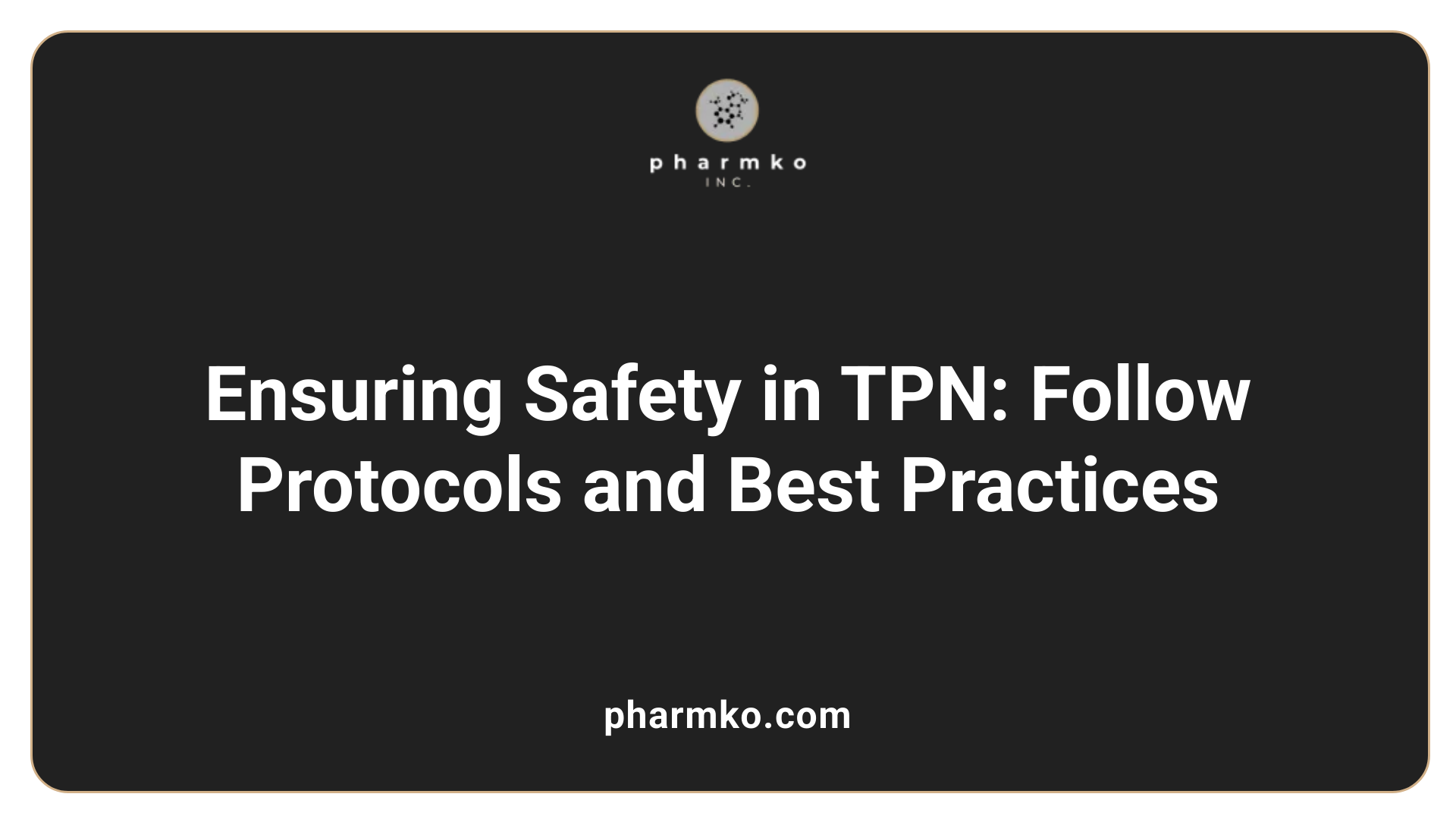
Are there guidelines available for safe TPN administration?
Yes, comprehensive guidelines exist to ensure the safe use of total parenteral nutrition (TPN). These protocols, established by reputable institutions like Nassau University Medical Center, cover various aspects of TPN therapy.
A multidisciplinary approach is crucial. This involves collaboration among physicians, pharmacists, nurses, and dietitians to tailor TPN formulations to individual patient needs. Proper assessment includes evaluating the patient’s nutritional status, laboratory values, and potential risks.
Formulation protocols detail the composition of TPN solutions, including appropriate electrolyte balance, vitamins, minerals, and lipid components. Selection of venous access is also important; central lines are preferred for prolonged or high-volume TPN but require strict aseptic techniques.
Preparation and administration follow strict aseptic procedures to avoid infections. Regular monitoring includes blood glucose levels, electrolytes, liver function tests, and signs of infections or metabolic disturbances.
Guidelines highlight the importance of proper storage, hang times for lipid solutions, and procedures for safe compounding. They also provide instructions for managing complications such as line infections, hyperglycemia, or electrolyte imbalances.
In summary, adherence to these detailed protocols helps minimize risks like infections and metabolic issues, ensuring that TPN therapy is both safe and effective for patients requiring nutritional support.
The impact of nutrition, including TPN, on menstrual health and hormonal regulation
How does TPN impact menstrual health and hormonal balance?
Total parenteral nutrition (TPN) involves delivering nutrients directly into the bloodstream, bypassing the digestive system. This method is often used in severe medical conditions such as intestinal failure, chronic liver disease, or inflammatory bowel disease.
TPN can influence menstrual health and hormone regulation primarily through its role in maintaining or restoring nutritional status. Adequate nutrition is essential for hormone production, regulation, and metabolism, which are vital for healthy menstrual cycles.
In women suffering from conditions like short bowel syndrome or severe gastrointestinal diseases, TPN can support overall health and improve reproductive outcomes. Proper nutrient support during TPN can help stabilize hormone levels, aiding in conception and pregnancy maintenance.
However, TPN is not without risks. It can sometimes suppress immune function or lead to deficiencies in specific nutrients like iron, magnesium, or vitamins, which are crucial for menstrual health. For example, nutrient deficiencies can cause irregular periods or disruptions in hormone levels.
In clinical settings, well-managed TPN that meets individual nutritional needs can promote hormonal balance, supporting regular menstrual cycles and reducing symptoms related to hormonal imbalance. However, improper or inadequate TPN therapy may result in hormonal disruptions, fertility issues, or increased miscarriage risk.
In summary, while TPN can support menstrual health when properly administered, its impact depends on correct nutritional management and the individual's underlying health status. When appropriately used, TPN provides the critical nutrients necessary to maintain hormonal stability, ultimately supporting reproductive health.
The broader context: Men's health, hygiene, and nutritional wellbeing
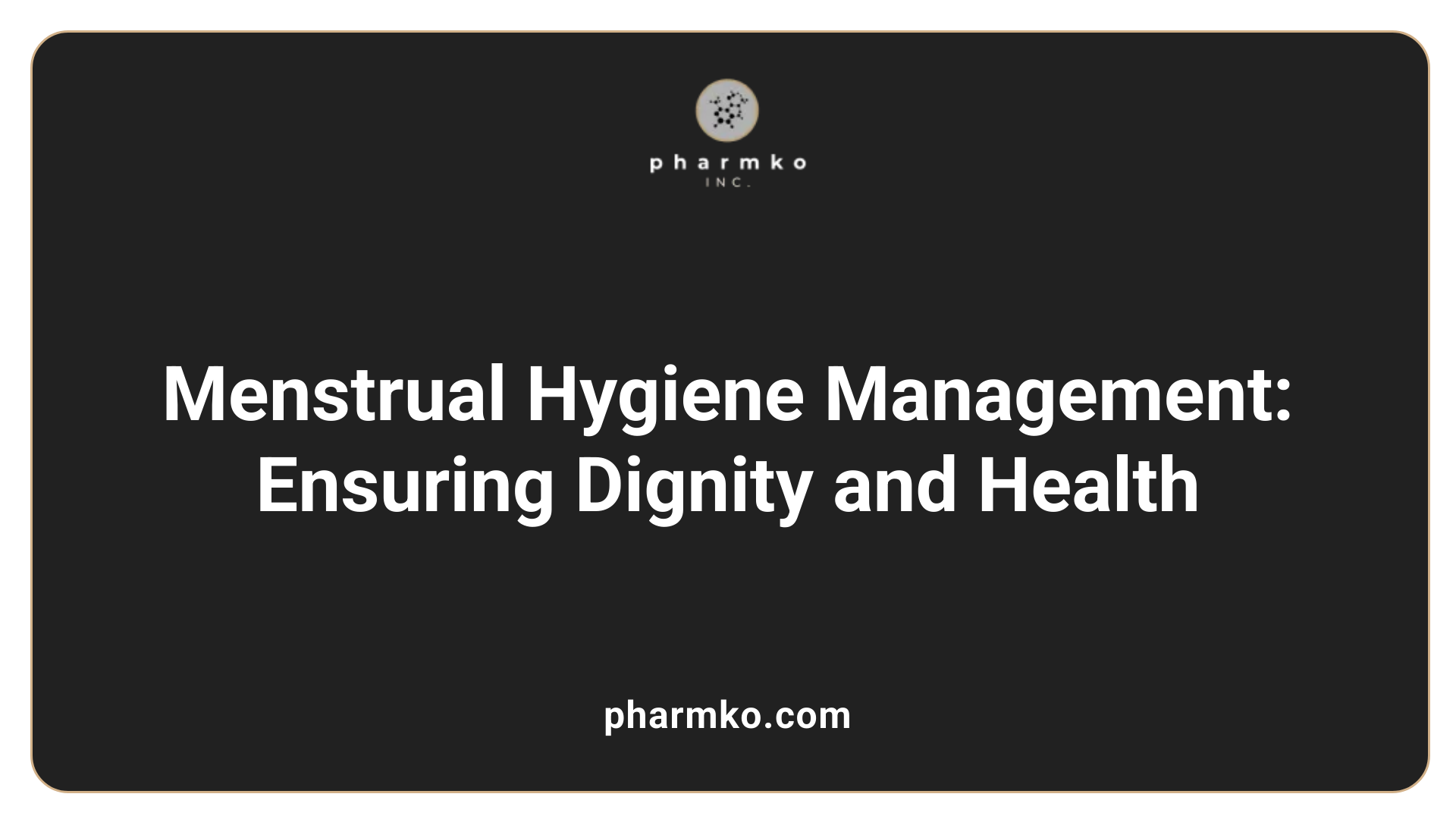
What is menstrual hygiene management (MHM)?
Good menstrual hygiene management (MHM) is essential for empowering women, girls, and other menstruators to live healthy, dignified lives. It encompasses using clean materials for menstrual management, changing them in privacy, washing with soap and water, and ensuring access to safe disposal methods.
Proper MHM is crucial in preventing health risks such as reproductive and urinary tract infections. It also plays a significant role in combating social stigma, maintaining privacy, and fostering dignity during menstruation.
Access to adequate sanitation facilities, a consistent supply of menstrual products, and education on menstrual health are fundamental to effective MHM. When these elements are in place, menstruators can attend school, work, and participate fully in social activities without fear or embarrassment.
Programs and policies aimed at improving MHM focus on infrastructure improvements—such as providing clean, private toilets with water and disposal facilities—as well as educational initiatives that increase awareness and challenge myths.
Multiple sectors, including health, education, and infrastructure, collaborate to advance MHM. These efforts not only enhance individual well-being but also support broader goals of gender equality and social development.
Efforts in different countries show that addressing MHM can lead to better health outcomes, reduce social stigmas, and promote menstrual equity, enabling women and girls to reach their full potential.
Bridging Nutrition and Reproductive Wellbeing
The evidence underscores that proper nutrition, including the tailored support provided by TPN, plays a vital role in maintaining and improving menstrual health and hormonal stability. While TPN is often used for critical nutritional support in severe medical conditions, its influence on reproductive health highlights the importance of nutritional adequacy for women’s overall wellbeing. As research advances, a deeper understanding of how TPN and other nutritional strategies can optimize menstrual health offers promising pathways for enhancing women’s quality of life, especially in cases of nutritional deficiencies or gastrointestinal failures. Integrating these insights into clinical practice and holistic women’s health initiatives can foster better health outcomes and empower women with the nutrition they need for reproductive vitality.
References
- The Connection Between Nutrition And Menstrual Health
- Optimizing menstrual health: the role of diet & exercise
- Menstrual Health and Hygiene
- 5.00 - Digestive - Adult | Disability
- The relationship between dietary habits and menstruation ...
- Transposon Announces TPN-101 Selected for Inclusion in ...
- The Impact of Nutrition on Menstrual Health
- Total parenteral nutrition in gynecology and obstetrics



